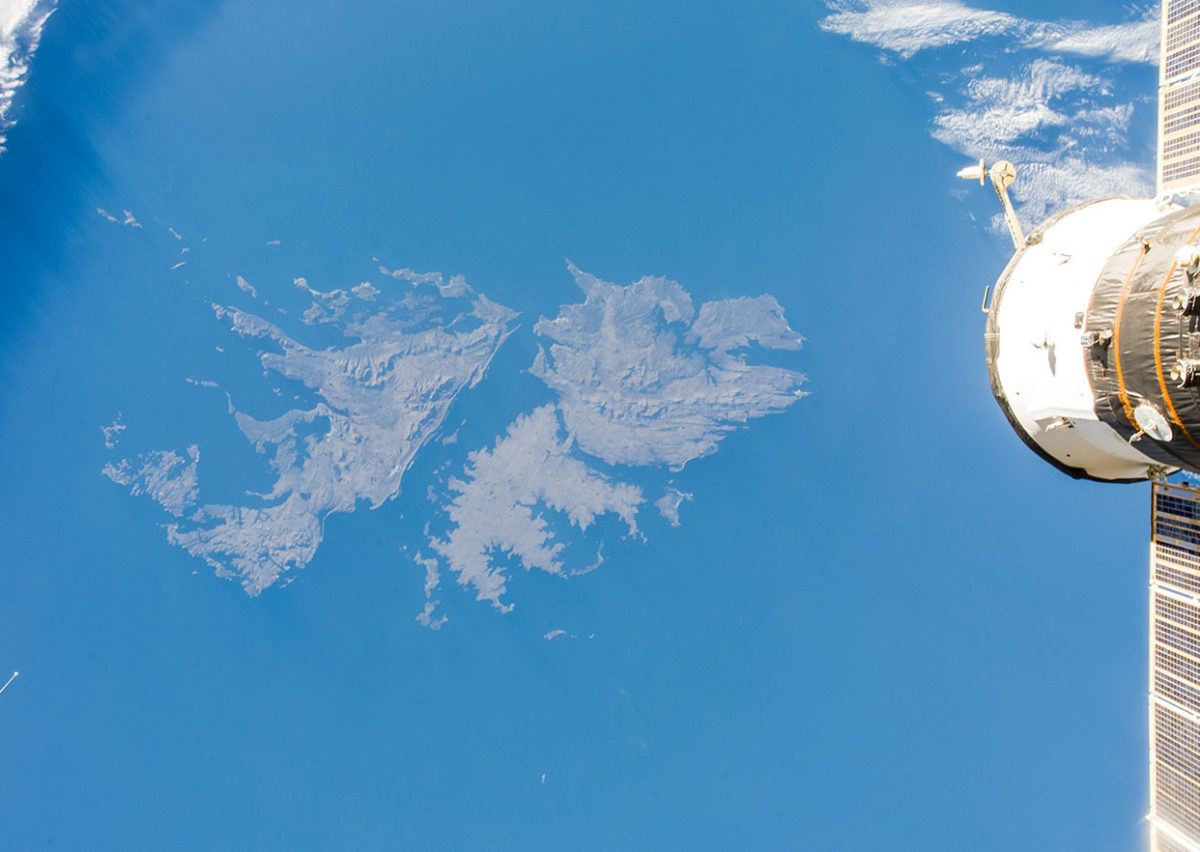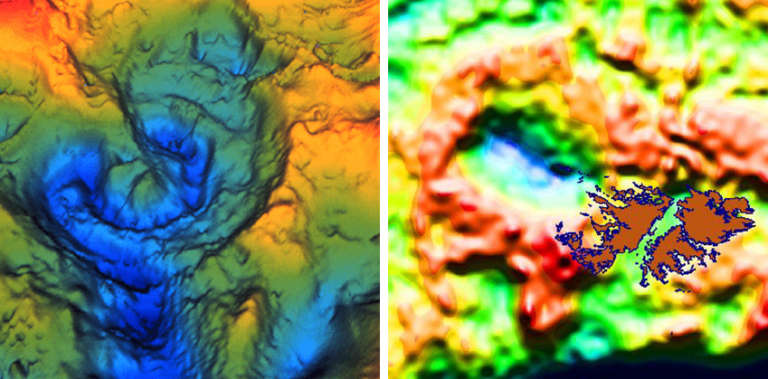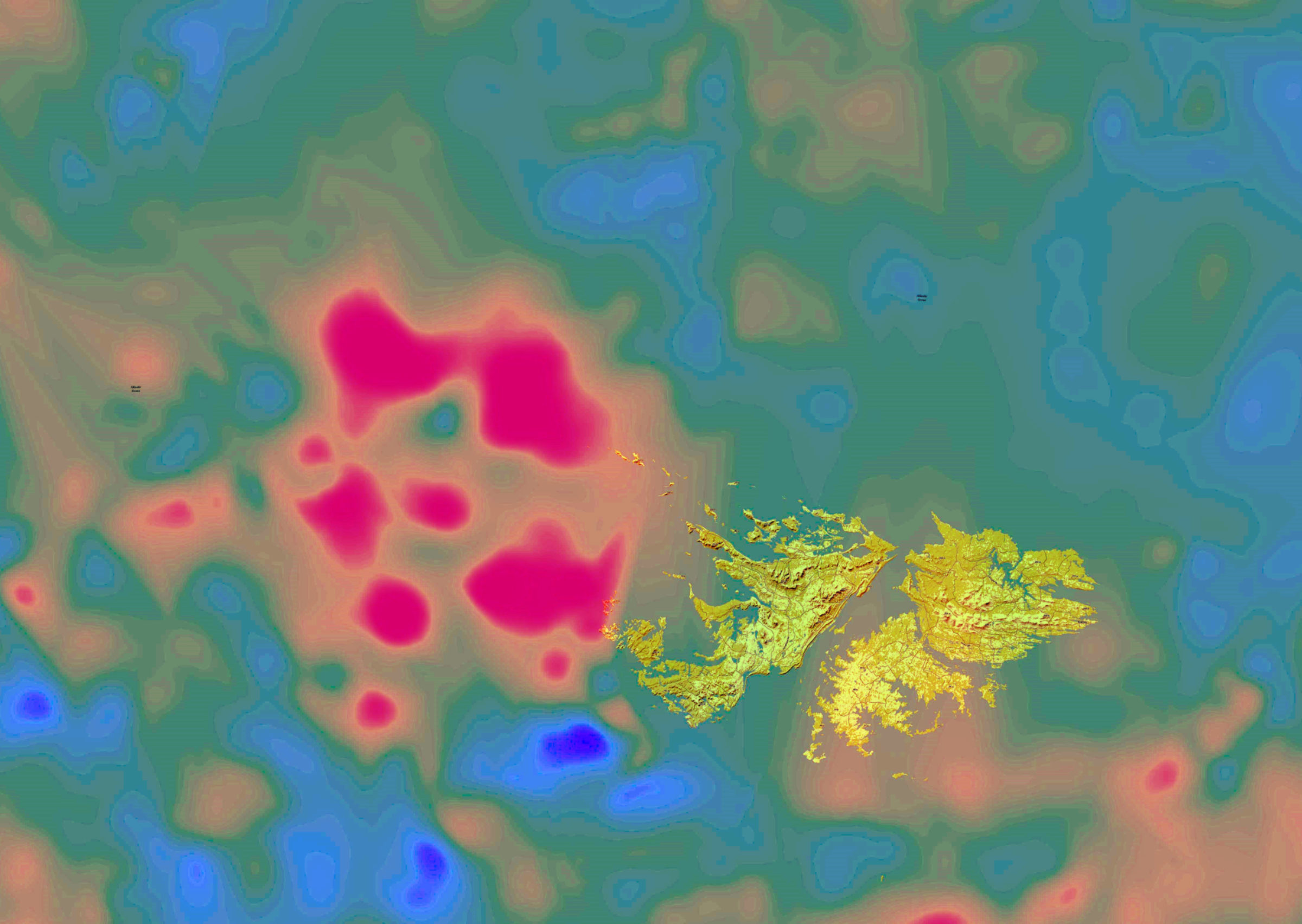Jason Davis • Jun 12, 2017
Did a Planetary Society citizen scientist help find one of Earth’s biggest impact craters?
About 66 million years ago, a 10-kilometer-wide hunk of rock smashed into Earth near what is now Mexico's Yucatán Peninsula.
The impact created a global dust cloud that snuffed out the sunlight, leading to the demise of 80 percent of Earth's plants and animals—including most of the dinosaurs. A 200-kilometer-wide crater buried near the city of Chicxulub is all that's left. It's ground zero for one of the world's most notable extinction events.
But throughout Earth's history, there have actually been five major extinction events. The largest of these occurred about 250 million years ago, when a whopping 96 percent of life on Earth died. Scientists aren't sure what caused the event, known as "the Great Dying." If it was a Chicxulub-sized impact; no one has ever found the crater.
Until possibly now.
A trio of scientists—one of whom is funded by The Planetary Society—thinks they may have found it. Off the coast of South America, near the Falkland Islands, there appears to be a 250-kilometer-wide crater buried under ocean sediment. An upcoming paper in the August edition of the peer-reviewed journal Terra Nova suggests it was formed by a massive asteroid or comet bigger than the one that hit Chicxulub.
Has the mystery of the Great Dying been solved?

The discovery
The story of the Falklands crater begins in 1991, shortly after evidence was piling up showing Chicxulub was probably the notorious dinosaur-killing impact site. Maps of Earth's gravity field there showed a circular distortion, indicating less-bulky sediment had settled in the crater since its formation.
Michael Rampino, a geologist at New York University who now also works for NASA's Goddard Space Institute in New York, started looking for similar gravity anomalies elsewhere on Earth. He reasoned that a crater associated with the Great Dying would be even larger than that of Chicxulub, and he soon found one.
"I was struck by this gravity anomaly on the Falkland plateau just to the west of the Falkland Islands," Rampino told me during a recent phone call. "It was a very nice circular well of gravity about 250 kilometers in diameter."
Rampino published his discovery in a brief abstract for the American Geophysical Union in 1992. It received modest press attention, but was soon forgotten—mainly because there was no additional evidence available to back up the finding.
"That's all the information I had," Rampino said. "I suggested that this should be looked at, with respect that it might be a buried impact crater."
It would be more than two decades before anyone was able to follow his suggestion.
The crater hunter
Maximiliano Rocca, who goes by Max, is not your typical crater hunter. Though he studied geology at the University of Buenos Aires, he never became a geologist, and instead works as a systems analyst in Buenos Aires, Argentina.
When he's not working at his day job, Rocca hunts for hidden Earth impact craters. He pores through scientific data, including gravity maps, and alerts the scientific community when he finds something interesting. Over the years, Rocca has published and co-published dozens of abstracts and papers, and presented at academic conferences.
Since 2002, The Planetary Society has funded Rocca's research through our Planetary Defense program. Rocca's unique research has paid off; most notably, in 2004, when he discovered a 50-kilometer-wide feature in Colombia now confirmed to be the largest impact crater in South America.
Rocca, who prefers to communicate via email because of spotty Internet service making Skype calls difficult, often sends multiple, exclamation point-laden emails to convey his excitement. In one such email, he told me the Colombia crater was "one of the best things I have ever done in my life."
The Falklands impact crater, if confirmed, could dwarf his Colombia find.

The rediscovery
Rocca first read Rampino's abstract in 2002, 10 years after its publication. He looked at updated gravity maps, and sure enough, the crater was visible—but he still needed additional evidence.
At Chicxulub, there are five pieces of data to support the impact hypothesis. First, there's the gravity distortion. Secondly, the magnetic field in the area has a positive anomaly, indicating the presence of molten rock that remagnetized after the impact. Thirdly, the crater shape can be readily seen in seismic data—basically, a boat shoots out and records the reflections of sound waves, which penetrate beyond the loose sediment burying the crater. Fourthly, drilling samples show rock layers that correlate to those created by a massive impact. Fifth and finally, a thin layer of iridium, which is rare on Earth but common in asteroids, can be found embedded in rocks all around the world corresponding to the time of the crater formation.
Rocca searched in vain for Falklands magnetic data until 2015, when he finally got the necessary information from Jaime Báez Presser, a geophysicist in Paraguay. The magnetic maps showed a positive anomaly at the site, and furthermore, it was rose-shaped—exactly like the one seen at Chicxulub.
Next, Rocca obtained seismic data of the area from the petroleum company Schlumberger, which further confirmed the crater's presence.
By then, Rocca had contacted Rampino.
"He got in touch with me, and told me what he was doing," Rampino said. Together, Rocca, Rampino and Presser submitted their findings to Terra Nova in 2016—with Rocca, the citizen scientist, as lead author. The paper was accepted for publication.

How old is it?
The age of the area around the impact crater isn't precisely known. Rocca told me a 1990s survey calculated the Falklands plateau to be about 250 million years old. Later studies came up with a slightly older estimate.
"If the early age is correct, then we could be on the track of an impact structure of the same age as the worst life mass extinction event in the history of Earth, which would match the time period of the Great Dying." Rocca said.
There's only one way to know for sure: Collect a drilling sample.
"The actual smoking gun would be if you could drill down into that crater and find stuff at the bottom showing there had been a hypervelocity shock event," Rampino said. "But that's a very expensive operation."
Rampino also noted that unlike the Chicxulub impact, there is no iridium layer spread around the world corresponding to the time of the Great Dying.
"So it's a situation where we have a crater, but we don't know the age of the crater," he said.
The hope, Rocca and Rampino said, is that the Terra Nova paper will attract enough attention to warrant funding for a drilling expedition.
The simplest explanation
I asked Erwan Mazarico, a geophysicist at NASA's Goddard Space Flight Center, to read the paper and weigh in.
"The paper is quite intriguing, and the gravity and magnetic data seem suggestive," he said.
Mazarico cautioned that the seismic mapping data from Schlumberger only slices through one side of the suspected impact crater. There is clearly a cavity filled with sediments on the ocean floor. But is it definitely a crater?
"The seismic line is not aligned towards the center, so it's hard to assess what the entire planform shape of the interface actually is," said Mazarico.
Both Mazarico and a separate geologist told me the paper's hypothesis could be bolstered by providing a more detailed comparison between the Falklands data and Chicxulub, or even other known impact sites.
For his part, Rocca is hopeful he has helped make what could amount to a major scientific discovery. Pointing to Occam's razor, he told me that among competing hypotheses, the one with the fewest assumptions should be selected.
"Well, concerning our giant structure at West Falkland, the impact hypothesis is the most simple of all," he wrote. "It explains all the geophysical data with only one assumption."
Let’s Go Beyond The Horizon
Every success in space exploration is the result of the community of space enthusiasts, like you, who believe it is important. You can help usher in the next great era of space exploration with your gift today.
Donate Today

 Explore Worlds
Explore Worlds Find Life
Find Life Defend Earth
Defend Earth

